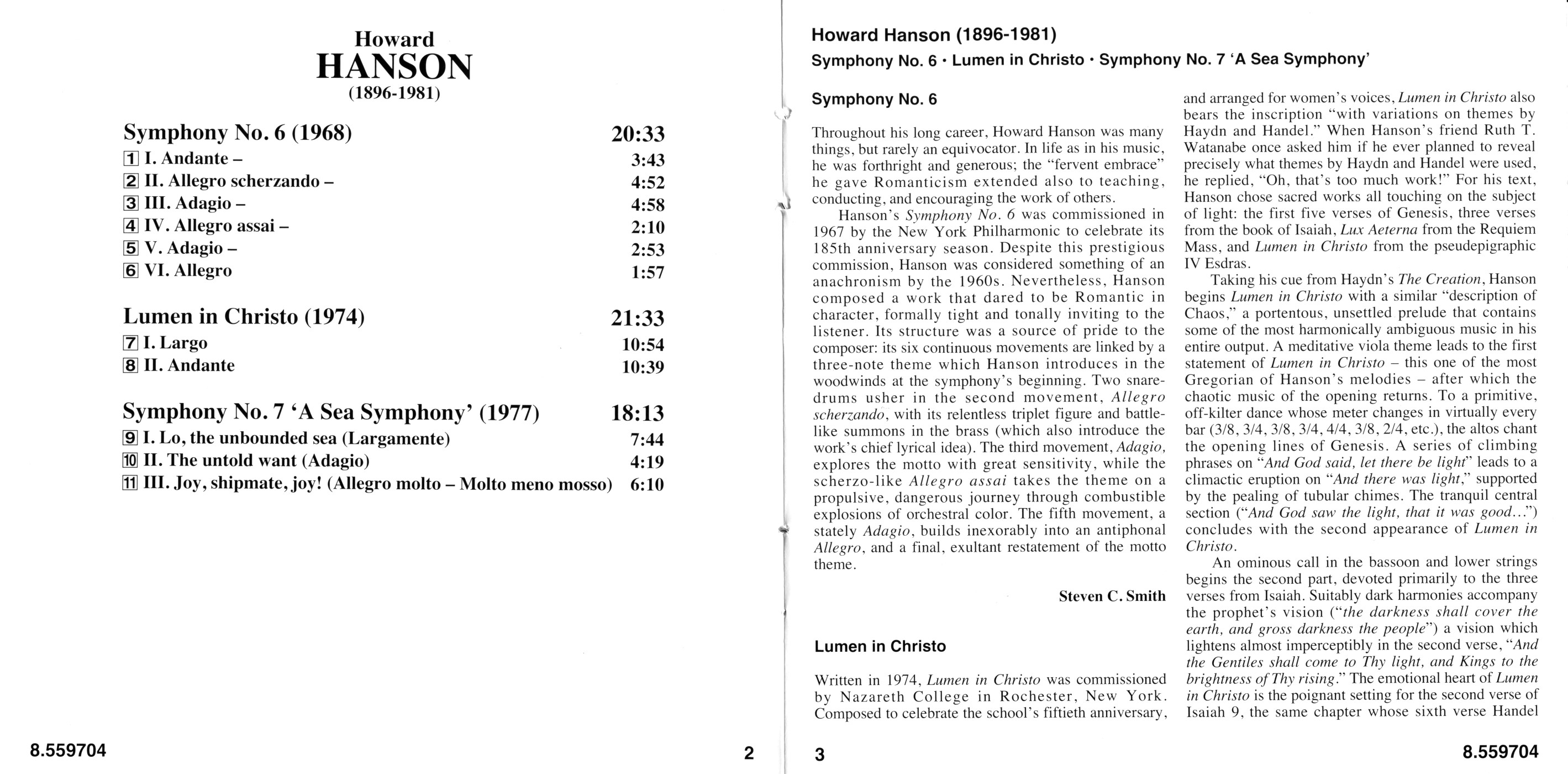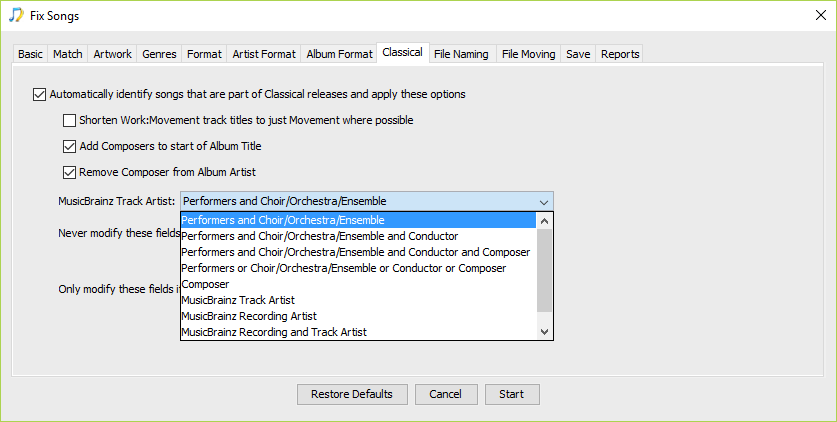1
I don’t understand the claim we use the track artist differently on classical. Just like on non-classical, it’s the person(s)/groups principally responsible for it.
2
It’s also typically the most prominently credited person on the release for the track. Here is a random album I grabbed from my collection (literally; I ran mb-open-release "$(find -type d -print0 | shuf -z -n1)"/01.*.flac and grabbed the first one with an uploaded booklet — the third one it opened.*)
Everything is uploaded to CAA, here is the most detailed tracklist:

Those tracks are clearly credited to Howard Hanson (the composer), not the Seattle Symphony, Seattle Chorale (7–11 only), and Gerard Schwarz (the performers).
You would be hard pressed to find a classical release where the non-classical track artist guideline “[t]rack artists should follow the release artist, except where another artist is credited in the track listing of the release. This can include various artists releases, featured artists, and tracks credited to another artist” would not result in the composer being the first, if not only, artist listed.
3
Currently, it let’s us store a credited-as name for the composer — which we otherwise can’t. The tracklist often uses a fuller name than the front cover, so the release artist doesn’t work for that (not to mention some releases don’t have all the composers on the cover). And the composer on the work entry is shared across all recordings of that work, so we can’t do it there either.
(There of course exists a similar problem with the performer AR credits, but it’s much less of an issue since recordings are far less shared than works.)
*mb-open-release is a trivial script I wrote:
#!/bin/sh
if [ -z "$1" ]; then
echo "Usage: $0 file.flac" >&2
exit 1
fi
tags="$(metaflac --show-tag=MUSICBRAINZ_ALBUMID "$1")"
if [ -z "$tags" ]; then
echo "No MUSICBRAINZ_ALBUMID tag found in $1" >&2
exit 2
fi
if [ $(echo "$tags" | wc -l) -gt 1 ]; then
echo "Multiple MUSICBRAINZ_ALBUMID tags found in $1" >&2
echo "$tags" >&2
exit 3
fi
alid=${tags#MUSICBRAINZ_ALBUMID=}
xdg-open "https://musicbrainz.org/release/$alid"
(and yeah, sorry that I haven’t found time to contribute code to MB, despite being an actual Perl developer… someday…)

